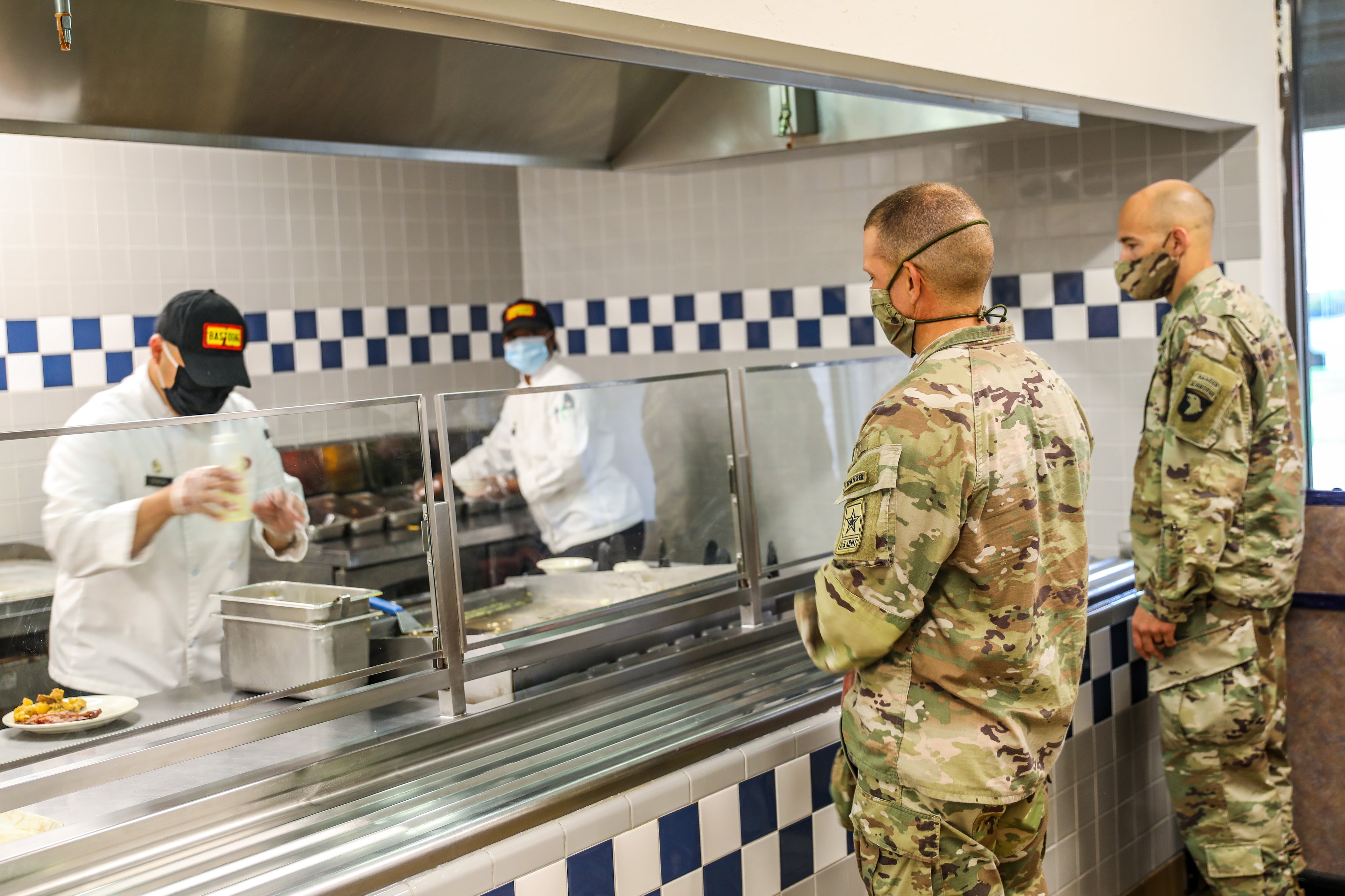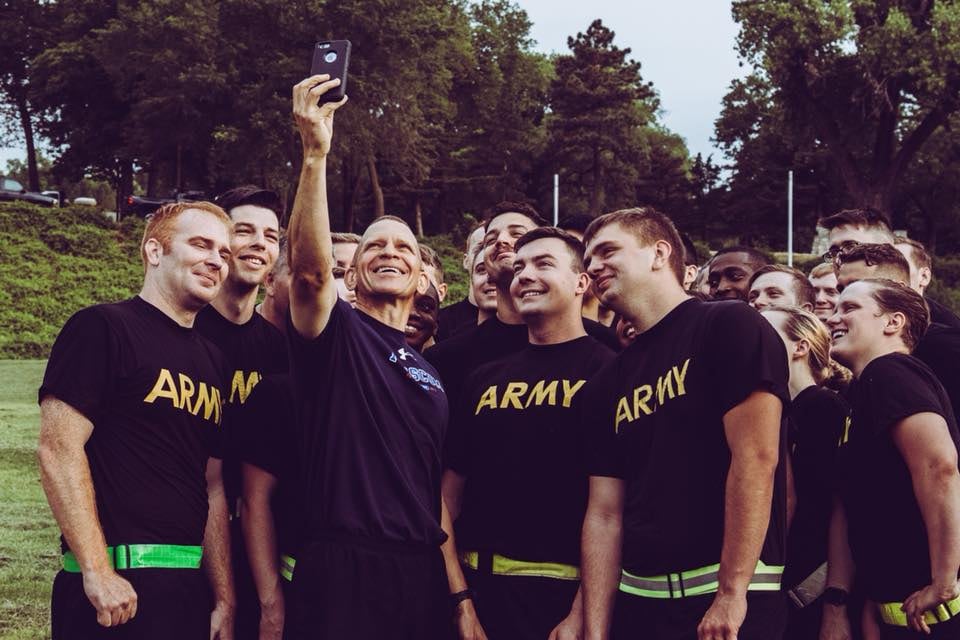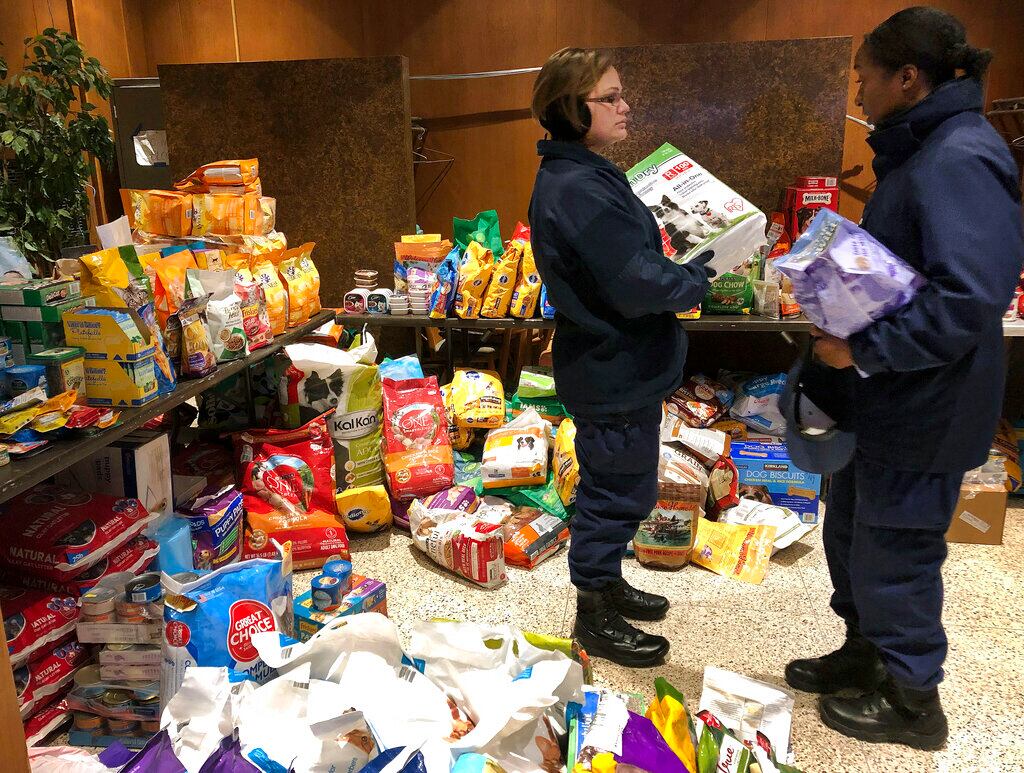Recently retired Sergeant Major of the Army Michael Grinston discussed Army fitness and nutrition in recent years and some unfinished business in those areas he hopes his successor will resolve.
“I left (Sergeant Major of the Army) Mike Weimer a big, long list of stuff,” Grinston said.
Grinston was a guest on the podcast “MOPs & MOEs”, which released the episode Sunday. The podcast focuses on human performance, health and nutrition primarily for a military audience. It has previously featured other Army leaders and experts on those topics.
During the hour-long podcast, Grinston spoke about efforts he and his staff made to improve the quality, options and service at dining facilities across the Army, the Army Combat Fitness Test and the Holistic Health and Fitness program, also known as H2F. Grinston also took a moment to share his opinion on leg tucks, a feature of the original ACFT that was later cut from the program.
“I promise nobody in the Army fought harder to keep the leg tuck than me,” Grinston said. “I wouldn’t say insubordinate, but it was close.”
Podcast hosts Alex Morrow and Drew Hammond asked Grinston about successes and unfinished items in the health and fitness areas during his four-year tenure as the Army’s top enlisted leader.
Morrow is an Army Reserve officer who previously attended the Army Physical Fitness School while on active duty. Hammond is a strength and conditioning coach who has spent a career working as an embedded human performance professional within both special operations and conventional military units.
Grinston retired this summer after having served 36 years on active duty. Army Times recently reported that Grinston will become the first enlisted person to head the Army Emergency Relief Foundation when he takes over as the organization’s director on Jan. 1.
The retired sergeant major said he’d hoped a pilot program that provided prepared meals for soldiers from the dining facilities would have been implemented Army-wide. That effort is still in development.
The option, in place at Fort Liberty, North Carolina, allows soldiers to order meals for pickup online from their DFAC, saving time and helping soldiers who work shifts that prevent them from using the dining facilities during regular hours to receive a meal.
Morrow and Hammond asked about ways to reduce fast food, junk food and other unhealthy items on installations to improve nutrition options.
The sergeant major was well known for eating at DFACs when he traveled, calling out substandard food or cleanliness issues and giving challenge coins to NCOs he saw eating at the facilities.

He encouraged leaders to use the facilities to both monitor the state of their soldiers’ dining areas and to interact with soldiers outside of regular duties.
Grinston said his team worked to improve the entire nutrition ecosystem on installations, ensuring the quality of DFAC food was better, and commissary options such as salads, sandwiches and prepared meals were available. During his time as SMA, Grinston served on the board for the Army and Air Force Exchange Service, or AAFES, which oversees restaurants on those services’ installations. While there, his focus was on educating soldiers to choose good nutrition options.
“Here’s my philosophy,” Grinston said. “Life’s about choices. I don’t think it’s my job to eliminate bad choices. What I want to do is make you so informed you choose wisely.”
Grinston was also a major supporter of the ACFT and the H2F program. The SMA posted his ACFT scores on social media and participated in physical training sessions with various units he visited on official trips.
This summer, weeks before his retirement, a congressional bill advanced that would have barred the ACFT from being the record PT test for soldiers and restored the decades-old Army Physical Fitness Test as the official test.
Grinston spoke out immediately, telling reporters that the new test was vastly superior to the old physical fitness test and necessary to change the culture of fitness within the Army.
In the recent podcast, he said returning to the APFT after the ACFT would be a huge step backward.
“Well, you might as well go back to the M1 Garand,” Grinston said, referencing a rifle soldiers used in World War II.
As far as the leg tuck comments are concerned, Grinston said he fought to keep it and cited a RAND Corporation study that endorsed the exercise.
The sergeant major said many who read the RAND study drew the wrong conclusions about using the leg tuck, a more difficult core strength exercise, over the plank.
The RAND study, released in 2022, reviewed 630,000 ACFT results and analyzed whether the test could predict success in combat tasks.
The leg tuck was determined as “not useful” in predicting combat task performance, lead author Dr. Chaitra Hardison told Army Times at the time.
But Grinston said the report noted if an individual couldn’t do a leg tuck, then evaluators didn’t have a way to assess core strength. That, however, was because the leg tuck includes upper body strength, core strength and grip strength.
“It rated higher than the plank because it’s a multiple-component exercise,” Grinston said.
The sergeant major pushed back on ongoing debates in which some say adding strength and conditioning coaches to brigades takes physical training authority away from NCOs.
But Grinston said that the expertise of such coaches is necessary for better physical training and should be seen as an added resource for NCOs to use when planning PT.
“I’ve heard this a little bit,” he said. “I usually tell people it’s pretty simple. If you gave your authority away, you gave it away, nobody took it from you.”
*CORRECTION: This article has been updated to include the correct acronym for the Army and Air Force Exchange Service and the types of installations AAFES oversees.
Todd South has written about crime, courts, government and the military for multiple publications since 2004 and was named a 2014 Pulitzer finalist for a co-written project on witness intimidation. Todd is a Marine veteran of the Iraq War.





